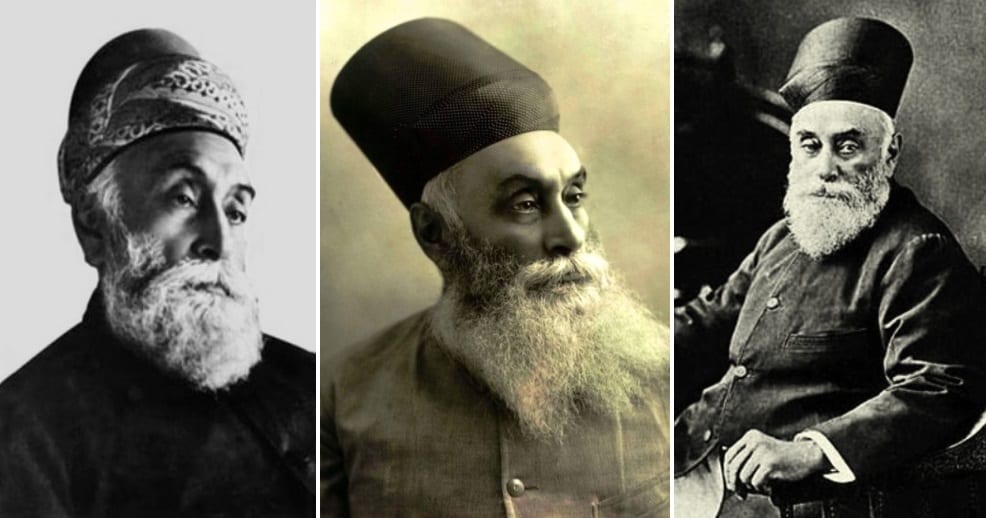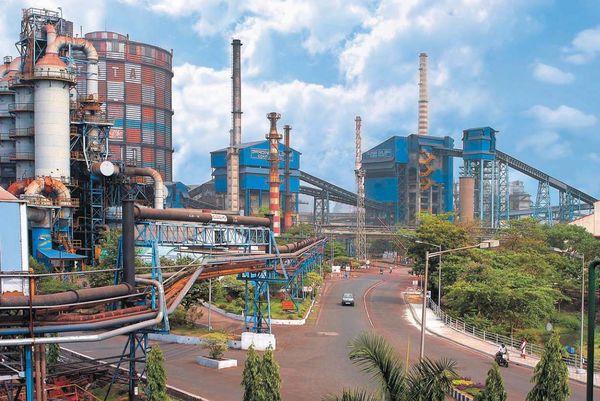Stories
Jamshedji Tata – An Iconic Entrepreneur

Jamshedji Tata has been regarded as the legendary ‘Father of Indian Industry’ both as a pioneer and a visionary. He was one of the greatest entrepreneurs of India who had a passionate vision of tomorrow. He loved the people of Mumbai from the core of his heart; he lived amidst them and extended his paternal love and care to the workers who sweated and toiled for him. He was a great humanist, whose achievements were epoch-making. He is a respected face of the Indian industry who founded the Tata Group, India’s biggest conglomerate company.

Jamshedji Nusserwanji Tata was born on 3rd March 1839 to a Parsi family in Navsari then part of the princely state of Baroda. His father was Nusserwanji and mother was Jivanbai Tata. His father was the first businessman in a family of Parsi Priest. Deviating from the family tradition, his father ventured into the field of business and started an export trading firm in Mumbai. Jamshedji joined his father in Mumbai at the age of 14 and enrolled at the Elphinstone College. He got his graduation degree in 1858 and took a foray into the trading business of his father at a most turbulent period of the country. He was married to Hirobai Daboo, while he was still a student. Their sons Dorabji Tata and Ratanji Tata succeeded Tata as the Chairman of the TATA Group.

Jamshedji’s achievements deserve a high eulogy. He had diverse dreams such as setting up an iron and steel company, a world-class learning science institution; a hydropower generation plant; textile manufacturing mills and a unique hotel. Only the hotel became a reality during his lifetime, with the inauguration of the Taj Mahal Hotel at Colaba waterfront in Mumbai on 3rd December 1903 at the cost of 1million rupees. Being an Indian, he was refused accommodation at Watson’s Hotel at Kalaghoda in Mumbai, which John Watson had got built between 1867 and 1871. His ‘Taj’ was passive revenge to secure equality of status for his countrymen.

In the designing and construction of the Taj Hotel Jamshedji showed the genius of an architect. He chose a picturesque site in the harbour so that the Taj could serve as a symbol of India’s dignity for the Europeans visiting the country. He also showed his talent in keeping the frontage at the back and had living rooms built facing the harbour so that the residents could enjoy the scenic beauty of the harbour that the historian Vincent Smith had called “Magnificient heaven”. It was a massive heritage building and the first building in India to use electricity and the first hotel in India to use American fans. It provided comfort and luxury on par with European hotels.
Jamshedji brought about a revolution in the system of commuting in Mumbai. He conceived the change from horse-driven tramcars to electrically powered ones and to materialize this idea he thought of building the Khopoli hydropower plant near Lonavla. Water from the lakes around Lonavla was drawn through large pipes to the edge of the deep precipice overlooking Khopoli – to serve as a waterfall to run the turbines. Khopoli was Jamshedji’s answer to energy production.

At present Tata Hydroelectric Power Supply Company renamed Tata Power Company Limited is India’s largest private electric company with an installed generation capacity over 8000MW. Lord Wellington called hydropower generation at Khopoli “another magnificent permanent memorial of Jamshedji. Besides Mumbai, he loved Nagpur too, where he set up a cotton mill in 1874, which he christened “Empress Mill” when Queen Victoria was proclaimed Empress of India on 1st January 1877.

Jamshedji is credited as the founder of the Tata Iron and Steel Company Limited (TISCO). His decision to set up a steel plant at Jamshedpur was influenced by two people. In Manchester, he attended a lecture by Thomas Carlyle who stated in his speech, “The nation which has Steel will have gold these few words exercised a revolutionary impact upon his mind. The second person was Major R.H. Mahaul, superintendent of Government Ordnance Factory at Cossipore, who produced a ‘prophetic report’ in which he mentioned: “the time has come for the establishment of iron and steelwork on a considerable scale”. Jamshedji seized on the idea with avidity.

In the 1880s, Jamshedpur was far off from Mumbai. But considering the advantage of the availability of iron-ore from its neighbourhood, Jamshedji stressed upon the idea of industrial development of the country, no matter from which corner of the country.
In 1914, Jamshedpur was the only steel producer in the British Empire. It was a hundred per cent Indian enterprise which was acknowledged by Viceroy Lord Chelmsford that the plant was due to the genius and imagination of Jamshedji. The Plant was set up at Sakchi village in present Jharkhand state. The village grew into a town and the railway station of Kalimati there was name Tatanagar. Now it is a bustling metropolis known as Jamshedpur in Jharkhand, named in honour of him. He showed his equal love for the workers of the steel plant as he had his great concern for the people of Mumbai. He wrote his instructions to his Dorabji Tata: “Be sure to lay wide streets planted with shady trees, every other of a quick-growing variety. Be sure that there is plenty of space for lawns and gardens. Reserve large areas for football, hockey and parks. Earmark areas for Hindu temples, Mohammedan mosques and Christian churches”.

Indian Institute of Science, Bengaluru, the pre-eminent Indian Institute for research and education in science and engineering is Jamshedji’s unique gift to the nation. The institution enjoys the reputation of getting the association of eminent scientists such as the Nobel Laureate C.V. Raman, Vikram Sarabhai, Satish Dhawan, Raja Ramanna, Jayant Narlikar and Jamshed Irani, the metallurgist who later became the Managing Director of Tata Steel. Stanley Reed, the editor of ‘The Times of India’ stated that – ‘Jamshedji, almost alone in his generation realised that the economic foundations of India to be secure, had to be based on science for effective production and hence the future of Indian Institute of Science was such a distinctive contribution to India’. Today, the Tatas are a big business magnet having a good number of large companies like TISCO Limited, TELCO Limited, Tata Consultancy Services, Tata information system and so on.
Jamshedji believed that if India were to get rid of poverty, her “finest minds have to be harnessed”. In order to achieve that, he established in 1892 the J.N. Tata Endowment. This developed into the Tata scholarship, which helped Indian students regardless of caste or creed to pursue higher studies in England. J. R. D Tata called Jamshedji as “a practical man and realist, who always took the far view to see not quick returns but the ultimate benefit of India in his schemes and plans, to have in his make-up a good deal of the visionary and dreamer…. he played the role of a pioneer in India in another direction as well as that of constructive philanthropy.”

Jamshedji was deeply committed to directing his wealth and energy towards the building of an economically and socially strong India. Welfare of the people was always his first concern. He used his ways to enrich India and her people. He pursued three guiding principles in his life: “Good thoughts, Good words and Good deeds”, which he had got engraved on his crest. During his lifetime he never allowed to link his name to any of his projects. Jamshedpur was named after his demise. Truly a great humanist, he was “the man who saw tomorrow”. The Times of India wrote on Tata’s death on 19th May, 1904: “He was not a man who cared to bask in the public eye….he sought no honour and he claimed no privilege, but the advancement of India and her myriad people was with him an abiding passion”.
To conclude in the words of Jawaharlal Nehru who expressed that jamshedji showed rare courage and vision for which we should honour his memory and remember him as one of the big founders of modern India.






























